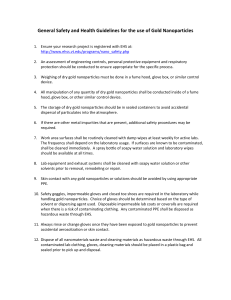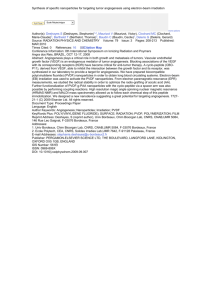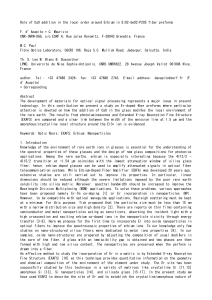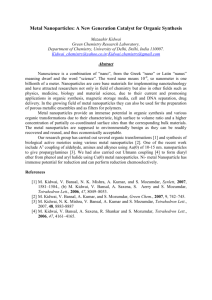MS Word
advertisement
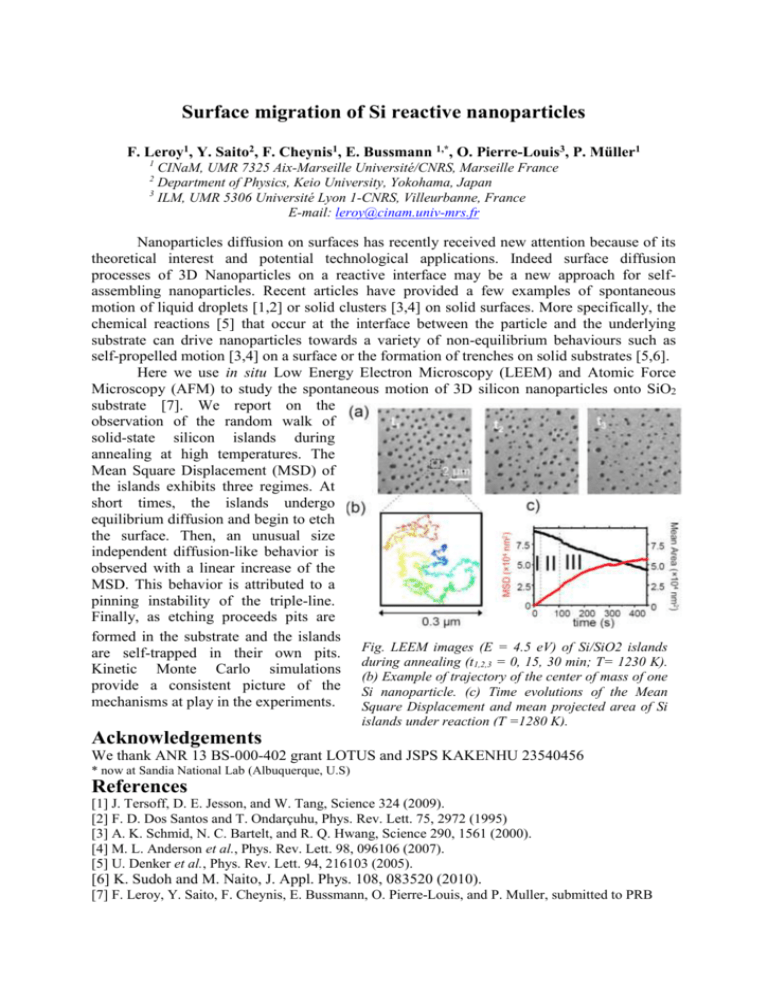
Surface migration of Si reactive nanoparticles F. Leroy1, Y. Saito2, F. Cheynis1, E. Bussmann 1,*, O. Pierre-Louis3, P. Müller1 1 CINaM, UMR 7325 Aix-Marseille Université/CNRS, Marseille France Department of Physics, Keio University, Yokohama, Japan 3 ILM, UMR 5306 Université Lyon 1-CNRS, Villeurbanne, France E-mail: leroy@cinam.univ-mrs.fr 2 Nanoparticles diffusion on surfaces has recently received new attention because of its theoretical interest and potential technological applications. Indeed surface diffusion processes of 3D Nanoparticles on a reactive interface may be a new approach for selfassembling nanoparticles. Recent articles have provided a few examples of spontaneous motion of liquid droplets [1,2] or solid clusters [3,4] on solid surfaces. More specifically, the chemical reactions [5] that occur at the interface between the particle and the underlying substrate can drive nanoparticles towards a variety of non-equilibrium behaviours such as self-propelled motion [3,4] on a surface or the formation of trenches on solid substrates [5,6]. Here we use in situ Low Energy Electron Microscopy (LEEM) and Atomic Force Microscopy (AFM) to study the spontaneous motion of 3D silicon nanoparticles onto SiO2 substrate [7]. We report on the observation of the random walk of solid-state silicon islands during annealing at high temperatures. The Mean Square Displacement (MSD) of the islands exhibits three regimes. At short times, the islands undergo equilibrium diffusion and begin to etch the surface. Then, an unusual size independent diffusion-like behavior is observed with a linear increase of the MSD. This behavior is attributed to a pinning instability of the triple-line. Finally, as etching proceeds pits are formed in the substrate and the islands are self-trapped in their own pits. Fig. LEEM images (E = 4.5 eV) of Si/SiO2 islands during annealing (t1,2,3 = 0, 15, 30 min; T= 1230 K). Kinetic Monte Carlo simulations (b) Example of trajectory of the center of mass of one provide a consistent picture of the Si nanoparticle. (c) Time evolutions of the Mean mechanisms at play in the experiments. Square Displacement and mean projected area of Si islands under reaction (T =1280 K). Acknowledgements We thank ANR 13 BS-000-402 grant LOTUS and JSPS KAKENHU 23540456 * now at Sandia National Lab (Albuquerque, U.S) References [1] J. Tersoff, D. E. Jesson, and W. Tang, Science 324 (2009). [2] F. D. Dos Santos and T. Ondarçuhu, Phys. Rev. Lett. 75, 2972 (1995) [3] A. K. Schmid, N. C. Bartelt, and R. Q. Hwang, Science 290, 1561 (2000). [4] M. L. Anderson et al., Phys. Rev. Lett. 98, 096106 (2007). [5] U. Denker et al., Phys. Rev. Lett. 94, 216103 (2005). [6] K. Sudoh and M. Naito, J. Appl. Phys. 108, 083520 (2010). [7] F. Leroy, Y. Saito, F. Cheynis, E. Bussmann, O. Pierre-Louis, and P. Muller, submitted to PRB






